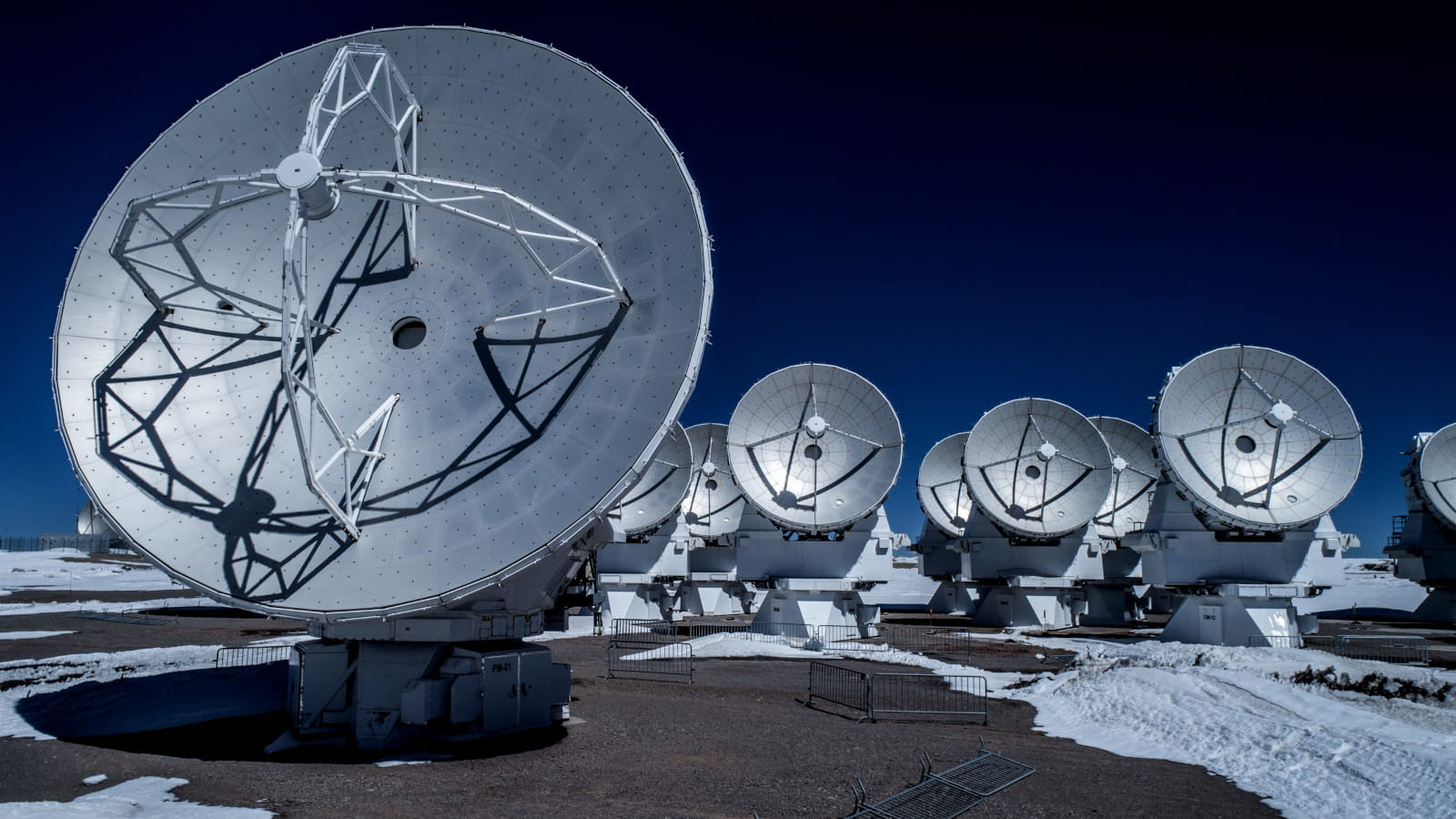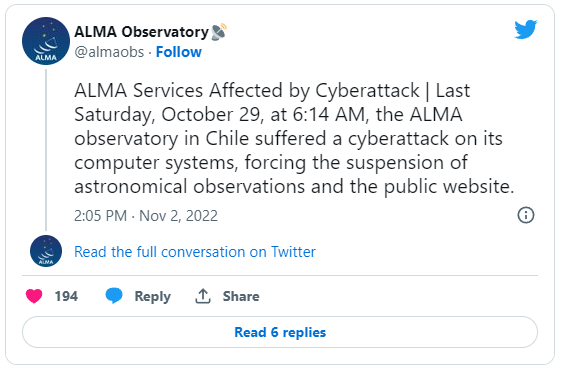The Atacama Large Millimeter Array (ALMA) Observatory in Chile has suspended all astronomical observation operations and taken its public website offline following a cyberattack on Saturday, October 29, 2022.
Email services at the observatory are currently limited, and IT specialists are working toward restoring the affected systems.
The organization informed the public about the security incident on Twitter yesterday, saying that at this time, given the nature of the episode, it is impossible to estimate a date for a return to normal operations.
The observatory also clarified that the attack did not compromise the ALMA antennas or any scientific data, indicating that there are no signs of unauthorized data access or exfiltration.
BleepingComputer has contacted ALMA Observatory in an attempt to learn more about the security incident, and a spokesperson shared the following comment:
"We cannot further discuss the details as there is an ongoing investigation.
Our IT team was prepared to face the situation and had the proper infrastructure, although there is no flawless defense against hackers.
We are still working hard on the full recovery of services. Thanks for your understanding." - ALMA Observatory.
The ALMA observatory is comprised of 66 high-precision radio telescopes of 12 m diameter arranged in two arrays, located at an elevation of 5,000 m (16,400 ft) at the Chajnantor plateau.
The project cost $1.4 billion, making it the world’s most expensive ground telescope, and it was developed thanks to a multi-national effort involving the United States, Europe, Canada, Japan, South Korea, Taiwan, and Chile.
Since 2013 when ALMA entered normal operational status, it has aided pioneering comet and planetary formation studies, participated in the Event Horizon project to photograph a black hole for the first time in history, and detected the biomarker ‘phosphine’ in the atmosphere of Venus.
The observatory is used by scientists of the National Science Foundation, the European Southern Observatory, the National Astronomical Observatory of Japan, and other groups from around the world, so any halt in its operations impacts multiple science teams and ongoing projects.
For now, users are advised to keep an eye out for status updates on NRAO’s website or ALMA Observatory’s social media channels.
Observers can use this online portal to receive support from the organization.
- aum and Karlston
-

 2
2





Recommended Comments
There are no comments to display.
Join the conversation
You can post now and register later. If you have an account, sign in now to post with your account.
Note: Your post will require moderator approval before it will be visible.